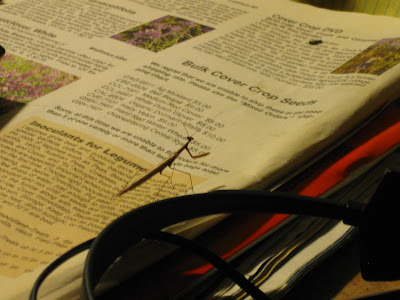I have to admit, I plant haphazardly. Whenever I want to plant something, like tomatoes, or peppers, I just find an available spot in my garden, and then I just plant it. It does work, I grow quite a bit of food in my garden, but I wanted to figure out some planned yields of the vegetables that I plant. Hence, this experiment.
I want to figure out for sure what kind of yield I can get from a sample bed. I am experimenting with black beans at this particular point. I have planted some black beans from the grocery store bag in my
newly created tree mulch bed. I did not do it for the yields, but to enrich the soil with the nitrogen that beans naturally give to the soil. I did not give good care to these beans, nor that I expected any particular yields. But, so far, I have harvested a half a pound of organic black beans, which is pretty spectacular in itself.
I did not even particularly cared for the type of the bean to plant, all I cared for was to enrich the soil. But, given the choice of beans to plant, I went with the black beans because I just love them in my chili and re-fried bean dishes. This is May in Florida, and planting beans is somewhat late because of the heat. But I am going to perform this experiment anyway because I have a portion of the garden where it is shielded from the scorching sun in the afternoon. The bed is not huge, it is only 40" by 40#, but it is a good size for a controlled experiment. Here's what this bed looks in a late night (after work) photo:
This bed is one my typical
double-dug beds that I used to build in my garden. It is covered with about an inch of tree mulch that electric company delivers for free to the homeowners. The mulch keeps the moisture in, as well as keeps the temperature down. All in all, not a bad situation for the black beans.
Being true to the experiment I want to keep everything scientific, as much as I can. So, if I have a 1600 square inch bed, I need to plant 160 beans (roughly 10 beans per square foot). It was quite a chore, but I counted exactly 160 beans. Here's what 160 beans look like:
That looks awfully close to the amount of beans you get from a regular store bought package of bean seeds. And weighing these beans confirmed that; it is close to two ounces.
So, if we go by the regular expectations, then by planting two ounces of beans I should yield forty ounces of beans, or roughly two and a half pounds (1:20 yield). This number sound pretty incredible to me. I think I would be happy to get a half of a pound of beans from this 40" by 40" patch, but this would amount only to 1:4 yield.
So, the experiment is on. I have to admit that I will baby this patch more than I regularly care for the rest of the garden. But, if nature has its course, the yield should be pretty close to the expectations.























